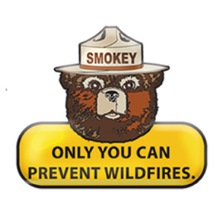 |
|
|
|
|
|
|
|
|

|

photo by East Fork Fire Department |

photo by Booneville Owsley VFD |
|

photo by Whitesville Fire Department |

photo by Warsaw Gallatin FR |

photo by Eagle Sawyer VFD |
|

photo by Horse Cave Fire Department |

photo by Hindman VFD |

photo by Little Sandy VFD |
|

photo by Estill County Fire Department |

photo by Watts Caney Fire Rescue |
Financial and other assistance
Kentucky residents with wildfire damage may be eligible for FEMA assistance to help cover costs such as paying for essential items, finding a place to stay, replacing personal property, or making basic home repairs. You can apply:
Online by visiting https://www.disasterassistance.gov
By calling 1-800-621-3362
Through the FEMA App
If you have insurance, file a claim as soon as possible and be ready to provide your coverage information when applying to FEMA.

If you have any information to add to this section, please email us at support@gumsnroses.com |
|
|
|

|

|

|
 |

|

|

|

|

|

|

|

|

|

|

|

|

|

|

|

|

|
|
|
|
|

photo by Boston VFR |

photo by Summersville VFD |

photo by Salt Lick Fire Rescue |
|
|
|
|
| Kentucky's Fire Seasons |
Spring Forest Fire Hazard Season: Feb. 15 through April 30
Fall Forest Fire Hazard Season: Oct. 1 though Dec. 15
During forest fire hazard season, it is illegal to burn between the hours of 6 a.m. and 6 p.m. within 150 feet of any woodland or brushland.
|
| Kentucky Fire Management |
Most of Kentucky's wildfires are caused by humans - 99%. Some are accidental such as unmonitored debris burning, campfires, and sparks from farm equipment, but many are intentionally set. Forest fires in Kentucky usually burn close to the ground so they usually don't kill trees.
Two fire seasons exist for Kentucky, one in the early spring (mid February to early May) and the other late fall (October through December). Conditions of warm temperatures, low humidity and a leaves on the ground dried by the sun are very conducive to forest fires.
It's important to remember that any land owner found responsible for a fire getting out of hand is accountable for the entire cost of suppressing that fire.
|
| How do forest fires get started? |
|
The majority of the fires in Kentucky are intently set by arsonists. Many of the remaining fires are found to be the result of individuals that have been burning trash or leaves and the fires have escaped. Very few, if any, are the result of lightning as is the case in western United States. Kentucky's last bad fire season was 1987 with nearly 300,000 acres burned. The years in between have seen less acres burned due to rain patterns within the fire season.
|
| What can be done to protect Kentucky's forests from fires? |
|
Be careful if you have to burn during anytime of the year near or in a forest. During forest fire season, there are laws that prevail, one being not to burn closer than 150 feet to a forested area. Also do not burn between the hours of 6 am and 6 pm. Prevent needless forest fires!
|
| Wildland Fire Suppression Efforts |
Wildland fires have been occurring in Kentucky for thousands of years. Native Americans used fire to clear land for wildlife and early settlers adopted these same land-clearing techniques. Unfortunately, these fires began to threaten homes and communities prompting the need to suppress wildfires and establish forest protection laws. The first forest protection laws were enacted in 1831 in a few specific counties with heavily wooded areas. The fine and penalty for setting a fire was $20. Today, Kentucky's forest protection laws include much stiffer penalties for intentionally setting a fire on land owned by another (KRS 149.380). The penalties for violating KRS (149.380) include a fine of not less than $1,000 or more than $10,000, imprisonment for not more than five years, or both fine and imprisonment.
Although the Division of Forestry is the lead agency in fighting wildfires on private lands, there is no one agency that can fight all the wildland fires in Kentucky. Oftentimes, wildfire suppression may involve a number of different agencies as well as rural and city fire departments. On larger fires or during times of extreme fire activity, agencies will work together under the Incident Command System to fight fires.
|
To Visit the Kentucky Division of Forestry Active Incidents
Click HERE
|
|
|
 |
|
|
